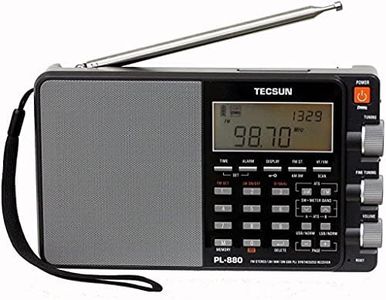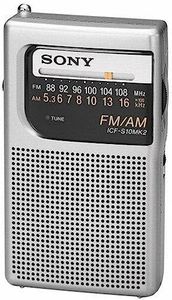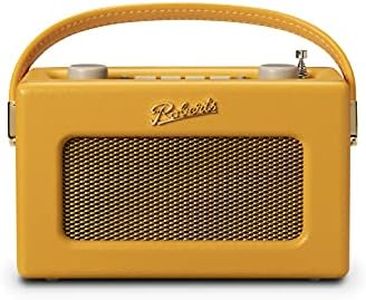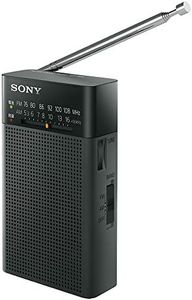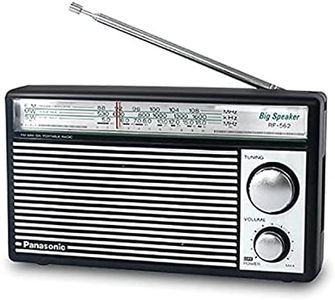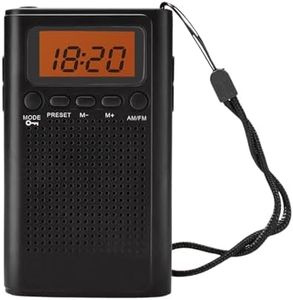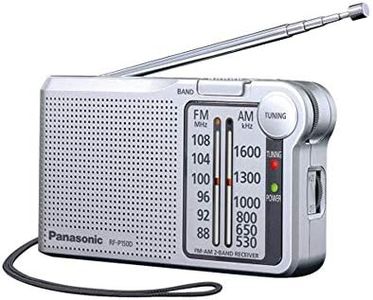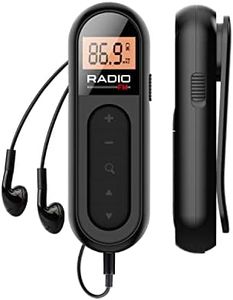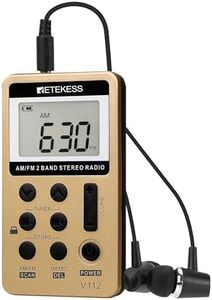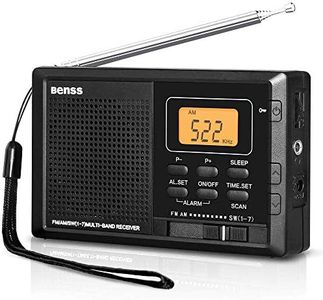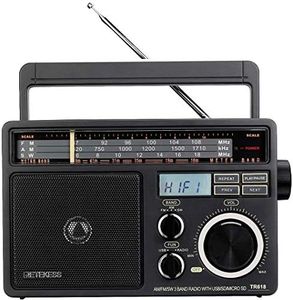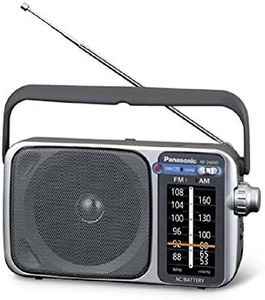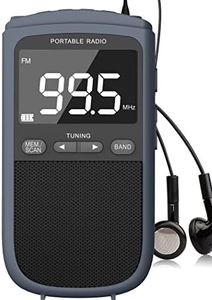We Use CookiesWe use cookies to enhance the security, performance,
functionality and for analytical and promotional activities. By continuing to browse this site you
are agreeing to our privacy policy
10 Best Transistor Radios
From leading brands and best sellers available on the web.By clicking on a link to a third party's website, log data is shared with that third party.
Buying Guide for the Best Transistor Radios
When choosing a transistor radio, it's important to focus on how and where you'll be using the device. Transistor radios are valued for their simplicity, portability, and ability to access AM/FM broadcasts without relying on internet or streaming services. Think about if you'll use it mainly at home, while travelling, outdoors, or during emergencies, as this can influence the features you'll need. By focusing on certain key specifications, you can ensure you end up with a radio that's reliable, easy to use, and suited for your lifestyle.Frequency Bands (AM/FM/SW)Frequency bands refer to the range of radio stations the device can receive, such as AM, FM, and sometimes SW (shortwave). This is important because it determines the variety of stations and content you can access. AM is useful for talk radio and news, especially in remote areas, while FM delivers better sound quality for music and local broadcasts. Some radios include SW, which picks up international broadcasts or distant stations, useful for enthusiasts or travelers. If you mainly tune into local stations, AM/FM will suffice, but if you want to explore global broadcasts, look for a model with shortwave reception.
Tuning MechanismThe tuning mechanism is how you select stations, and can be either analog (using a dial) or digital (using buttons and a display). This matters for ease of use and tuning accuracy. Analog dials are traditional and simple, but can be imprecise; digital tuners are more accurate and often include features like preset memory. If you value simplicity and retro feel, analog may be preferable. If you want easier and faster station selection or use many presets, a digital tuner is more suitable.
Power SourceThe power source determines how you keep the radio running—common options include replaceable batteries, built-in rechargeable batteries, or AC power. This matters because it affects portability and convenience. Replaceable batteries are ideal for outdoor use or emergencies, as spares can be kept on hand. Rechargeable batteries are cost-effective and good for regular use, but need charging. AC-powered radios are best if you primarily use the radio in one spot, like at home. Consider where and how long you'll use your radio between charges or battery changes to pick the best fit.
Speaker Quality and SizeSpeaker quality and size influence how loud and clear the radio sounds. Larger radios often have bigger speakers, providing richer audio, while small radios may sound tinny but are easier to carry. If you’ll listen in noisy environments, or share audio with others, a bigger, better quality speaker matters. For personal or travel use, a compact radio with a headphone jack might be more practical. Your main listening setting—alone, with others, indoors, or outdoors—should guide this choice.
Size and PortabilitySize refers to the overall dimensions and weight of the radio. For carrying on walks, travel, or emergencies, a small and lightweight radio is ideal. Larger models may offer stronger reception or better sound, but are less convenient to carry around. Consider your intended use: frequent travelers and hikers benefit from pocket-sized models, while home or campsite use allows for something larger and sturdier.
Antenna TypeThe antenna helps the radio pick up signals, and can be internal or external (often a telescoping metal rod). Good reception is crucial, especially in areas with weak signals. External antennas generally pull in stations more clearly and are preferred for rural or fringe areas. If you’re mostly in urban environments with strong signals, an internal antenna may be sufficient and more convenient. Think about the signal strength in the places you want to use the radio, and go for a radio with a better antenna if you live or travel to remote regions.
